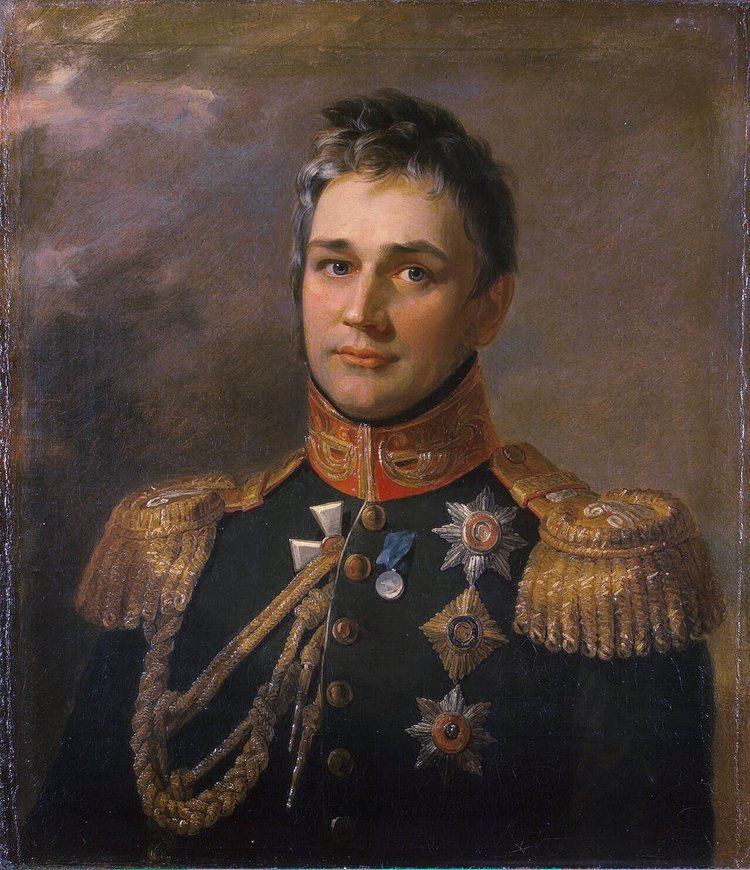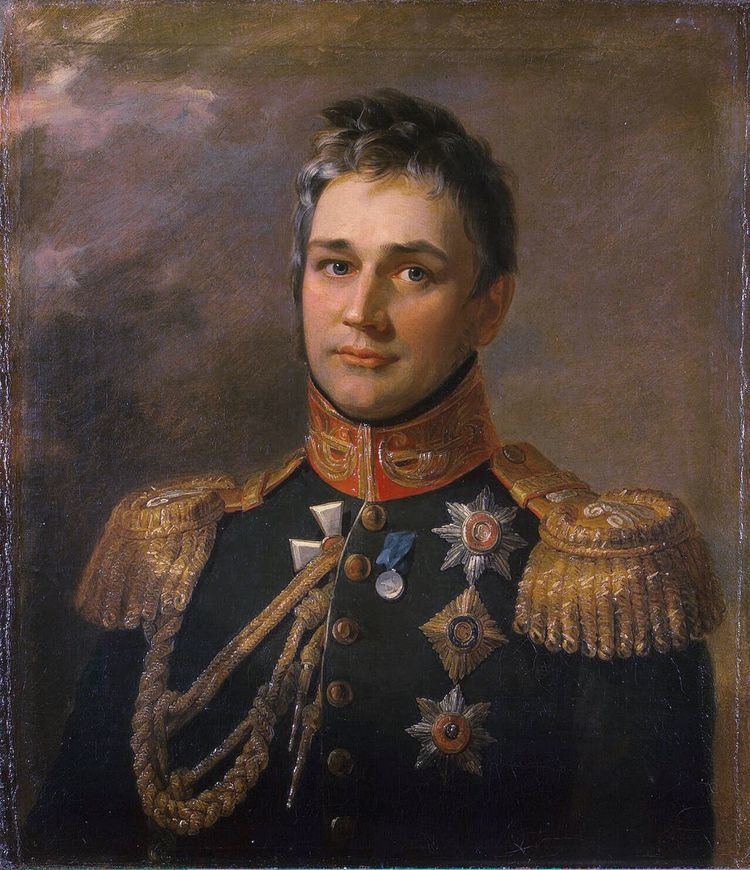Allegiance Imperial Russia Name Mikhail Vorontsov Parents Semyon Vorontsov | Years of service 1803-1856 Rank Field Marshal | |
 | ||
Born 30 May 1782Saint Petersburg, Imperial Russia ( 1782-05-30 ) Buried at Transfiguration Cathedral in Odessa Died November 18, 1856, Odessa, Ukraine Spouse Elizaveta Vorontsova (m. 1819) Place of burial Transfiguration Cathedral in Odessa, Odessa, Ukraine Similar People Elizaveta Vorontsova, Edward Blore, Aleksey Petrovich Yermolov, Aleksandr Baryatinsky, Imam Shamil | ||
Mikhail Semyonovich Vorontsov
Prince Mikhail Semyonovich Vorontsov (Russian: Михаи́л Семёнович Воронцо́в; 30 May [O.S. 19 May] 1782 – 18 November [O.S. 6 November] 1856) was a Russian prince and field-marshal, renowned for his success in the Napoleonic wars and most famous for his participation in the Caucasian War from 1844 to 1853.
Contents

Life
The son of Count Semyon Vorontsov and nephew of the imperial chancellor Alexander Vorontsov, he was born on 17 May 1782, in Saint Petersburg. He spent his childhood and youth with his father in London, where his father was ambassador. During 1803–1804 he served in the Caucasus under Pavel Tsitsianov and Gulyakov. From 1805 to 1807, he served in the Napoleonic wars, and was present at the battles of Pułtusk and Friedland. From 1809 to 1811 he participated in the Russo-Turkish War.
He commanded the composite grenadiers division in Prince Petr Bagration's Second Western Army during Napoleon's invasion of Russia in 1812. At the battle of Borodino, his division was in the front line and was attacked by three French divisions under Marshal Davout. Of the 4,000 men in his division, only 300 survived the battle. Vorontsov was wounded but recovered to rejoin the army in 1813. He commanded a new grenadiers division and fought at the battle of Dennewitz and the battle of Leipzig. He was the commander of the corps of occupation in France from 1815 to 1818.
On 7 May 1823 he was appointed governor-general of New Russia, as the southern provinces of the empire were then called, and namestnik of Bessarabia. In the year of the start of the Russo-Turkish War of 1828–1829, Vorontsov succeeded the wounded Menshikov as commander of the forces besieging Varna, which he captured on 28 September 1828. His wife, née Countess Branicka, had a liaison with Alexander Pushkin during her stay in Odessa, which resulted in some of the finest poems in Russian language.
In 1844, Vorontsov was appointed commander-in-chief and viceroy of the Caucasus. For military details see Murid War. At the battle of Dargo (1845), he was nearly defeated and barely fought his way out of the Chechen forest. By 1848 he had captured two-thirds of Dagestan, and the situation of the Russians in the Caucasus, so long almost desperate, was steadily improving. For his campaign against Shamil he was raised to the dignity of prince, with the title of Serene Highness. In the beginning of 1853, Vorontsov was allowed to retire because of his increasing infirmities. He was made a field-marshal in 1856, and died the same year at Odessa. His archives were published, in 40 volumes, by Pyotr Bartenev between 1870 and 1897.
A statue of Prince Vorontsov was unveiled in Odessa in 1863. In front of the monument stands the Odessa Cathedral with the marble tombs of Prince Vorontsov and his wife. After the Soviets demolished the cathedral in 1936, Vorontsov's remains were secretly reburied in a local cemetery. The cathedral was rebuilt in the early 2000s. The remains of Vorontsov and his wife were solemnly transferred to the church in 2005.
